
 |
| Greco-Buddhist Gandharan art |
Readers may agree that in the world of poetry, one poem rises above the rest. It is a world heritage treasure, a classic of the Western canon, and it is of course "Kubla Khan." So our Dharma editor, Dharma Teacher Seven, who majored in English literature at Oxford and UC Berkeley, pays homage to Samuel Taylor Coleridge's masterpiece by uncovering its unexpected Buddhist roots.
In Xanadu (Shangdu, Mongolia, China), what stately "pleasure-dome" was Coleridge referring to but a literal Buddhist stupa? The backstory to Coleridge's inspired piece is that it comes from a historical account of a real place in the exotic Orient, as the British called it back then.
 |
| Icy white stupa pleasure-dome |
He says he then "continued for about three hours in a profound sleep [probably more accurately today a visionary hypnagogic state]...during which time he had the most vivid confidence, that he could not have composed less than from two or three hundred lines...
"On Awaking he appeared to himself to have a distinct recollection of the whole, and taking his pen, ink, and paper, instantly and eagerly wrote down the lines that are here preserved" [13].
The passage continues with a famous account of an interruption [14]: "At this moment he was unfortunately called out by a person on business from Porlock...and on his return to his room, found, to his no small surprise and mortification, that though he still retained some vague and dim recollection of the general purpose of the vision, yet, with the exception of some eight or ten scattered lines and images, all the rest had passed away" [13].
 |
| The Buddha, Gandhara/Afghanistan |
It was actually composed in a dream, Coleridge claims. In Sept. 1797, Coleridge lived in Nether Stowey in the southwest of England and spent much of his time walking through the nearby Quantock Hills with his fellow poet William Wordsworth and Wordsworth's sister Dorothy [11]. (His route today is memorialized as the "Coleridge Way") [12].
He dreamed a poem of pure inspiration, hallucinating in a hypnogogic state of mind, vividly envisioning the historical accounts from Purchas' travels, imagining the sites Anglican Purchas described seeing in Buddhist Asia. Here is what he remembered from his opium trip or poetic vision:
 |
| Classic Buddhist stupa (burial mound reliquary), the Enlightenment Stupa, Russia |
KUBLA KHAN
Or, a vision in a dream. A Fragment.
In Xanadu did Kubla Khan
A stately pleasure-dome decree:
Where Alph, the sacred river, ran
Through caverns measureless to man
Down to a sunless sea.
So twice five miles of fertile ground
With walls and towers were girdled round;
And here were gardens bright with sinuous rills
Where blossomed many an incense-bearing tree;
And here were forests ancient as the hills,
Enfolding sunny spots of greenery.
But oh that deep romantic chasm which slanted
Down the green hill athwart a cedarn cover!
A savage place! as holy and enchanted
As e'er beneath a waning moon was haunted
By woman wailing for her demon-lover!
And from this chasm, with ceaseless turmoil seething,
As if this earth in fast thick pants were breathing,
A mighty fountain momently was forced:
Amid whose swift half-intermitted burst
Huge fragments vaulted like rebounding hail,
Or chaffy grain beneath the thresher's flail:
And mid these dancing rocks at once and ever
It flung up momently the sacred river.
Five miles meandering with a mazy motion
Through wood and dale the sacred river ran,
Then reached the caverns measureless to man,
And sank in tumult to a lifeless ocean:
And 'mid this tumult Kubla heard from far
Ancestral voices prophesying war!
The shadow of the dome of pleasure
Floated midway on the waves;
Where was heard the mingled measure
From the fountain and the caves.
It was a miracle of rare device,
A sunny pleasure-dome with caves of ice!
A damsel with a dulcimer
In a vision once I saw:
It was an Abyssinian maid
And on her dulcimer she played,
Singing of Mount Abora.
Could I revive within me
Her symphony and song,
To such a deep delight ’twould win me,
That with music loud and long,
I would build that dome in air,
That sunny dome! those caves of ice!
And all who heard should see them there,
And all should cry, Beware! Beware!
His flashing eyes, his floating hair!
Weave a circle round him thrice,
And close your eyes with holy dread:
For he on honey-dew hath fed,
And drank the milk of Paradise.
The new poem "Shakya Clan"
The vision in this Mongolian/Chinese scene is recast in faraway Bamiyan, Afghanistan, to the west of the Walled Kingdom. Bamiyan was one of the three seasonal capitals where Prince Siddhartha Gautama, who later became the historical Buddha Shakyamuni ("the Sage of the Scythians/Sakas"), was raised. History calls it Kapilavastu (Sanskrit) or Kapilavatthu (Pali). It is both the name of a country, capital, and Scythian/Saka territory in ancient Gandhara, Central Asia. There is a real Swat River in Gandhara, now part of Pakistan, which only recently came to exist out of the partitioning of India in 1947. But "India" itself did not exist at the time of the Buddha, when it was a loosely affiliated set of feuding kingdoms, republics, and territories held by family clan, the mahajanapadas. "India" only came to be after the rise of the Buddhist King Ashoka, who assembled an empire, the Buddhist Dharma wheel at the center of what later India (Bharat) would decide for its flag..jpg)
Saka/Scythian warrior prince golden garb
SHAKYA CLAN
Or a Dream, a Vision of Fragments
Dhr. Seven, Wisdom Quarterly
.jpg) |
| Saka-Muni Buddha |
In Kapiv’u did Shakya Clan
A state pagoda-dome decree:
Where Swat, the sacred river, ran
Through cliffs measureless to viman
Down to a sunlit sea.
So twice yojan of fertile ground
With walls and towers were girdled round;
And here were gardens bright by rivulets filled
Where blossomed many an incense-bearing tree;
And here were forests ancient as foothills,
Enfolding fields of glorious greenery.
But O, that magnificent statue which slanted
Up crimson hill athwart a cedarn cover!
A holy place! as serene and enchanted
As e’er beneath a waxing Moon was vaunted
By wild clan wailing for their sage Pathfinder!
And from this statue, with serene eyes farseeing,
As if this Earth in slow soft tufts were breathing,
A mighty charge momently was forced;
Amid whose swift half-intermitted burst
Huge fragments vaulted like rebounding hail
Or scattered-chaff beneath the thresher’s flail:
And ’mid these dancing rocks at once and ever
Flung up momently many a sacred sliver.
One yojan meandering with a mazy motion
Through wood and dale the sacred river ran,
Which reached from cliffs measureless to viman,
And sank in tumult into a lively ocean:
And ’mid this tumult Sakka heard from far
Ancestral voices, prophets sighing, war!
The shadows of the dome in measure
Floated midway on the waves;
Where was heard the mingled pleasure
From the quarry and the caves.
It was a miracle of rare device,

.
 |
| Tomyris, Scythian princess* |
In a vision once I saw:
It was a Scythian maid
And on her lute she played,
Singing as I sat in awe.
Strum did she so carelessly
And furrow her crescent brow.
Could I revive within me
Her braid lank and visage wan?
To such a deep delight ’twould win me,
The crinkle of her crown
That I would hang a disc in her hair —
That golden dome! those eyes of ice! —
That all who heard should see it there,
And all should cry, Beware! Beware!
Her flashing eyes! her floating hair!
I close my eyes with holy dread.
Admit, she sings, admit you’re scared!
For she on Nectar-dew hath fed
And savored the Soma of Paradise.
Now stones fall flat, spell is broken,
Scattered frost like teal blue tokens:
Talismans, amulets, airy moons
Woven, arranged in gilded plait.
Still stand I, somehow I’ve spoken,
Mere token that I’ll not be afraid.
And still lilts she her reverie,
A warrior of wounded knees
And bitter burnt offerings.
 |
| Scythian females were warrior princesses, the basis of ancient Greek Amazonian legends. |
- *The name Tomyris [Tamyris] is the Latin form of the Ancient Greek name Tomuris (Τομυρις), which is itself the Hellenization of the Saka name *Taumuriyaʰ, meaning "of family" derived from a cognate of the Avestan word taoxman and of the Old Persian word taumā (𐎫𐎢𐎶𐎠), meaning "seed," "germ," and "kinship" [1, 2]. She was a Sakan princess then a queen of the Massagetae.
 |
| What kind of Scythian was the Buddha? Gandharan, Indo-Scythian, a Saka from Indo-Sakastan |
The Scythians were very fierce and proud
Frozen sarcophagus of a Scythian warrior discovered in Mongol Steppes | SLICE | full documentary
 |
| Historian Dr. Ranajit Pal, PhD |
The ancient Scythian practice of deep burial of the dead, combined with extreme climatic conditions, could uncover the last frozen tombs on the planet and shed light on this little-known branch of Scythian civilization.
Tattoos reveal hidden wonders of 2,300-year-old Scythian grave in Mongolia | Secrets in the Ice
 |
| Read Dr. Ranajit Pal, Ph.D. |
- Dhr. Seven (poet), Ashley Wells, Amber Larson (eds.), Wisdom Quarterly; SLICE, 6/28/24; Science Channel, 7/14/23; Dr. Ranajit Pal, Ph.D. (Non-Jonesian Indology and Alexander
































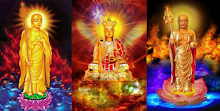



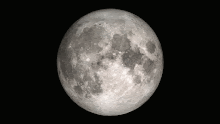

















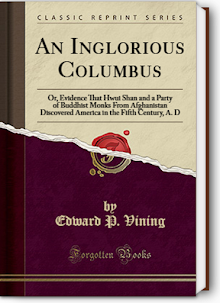



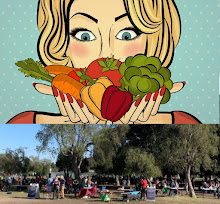









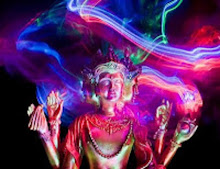


























































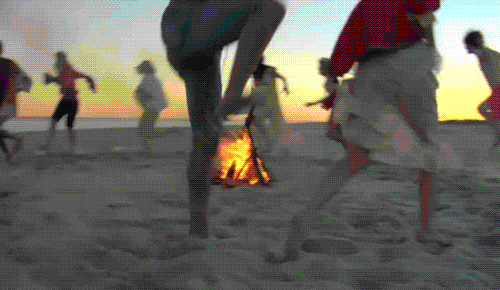





























































































































No comments:
Post a Comment